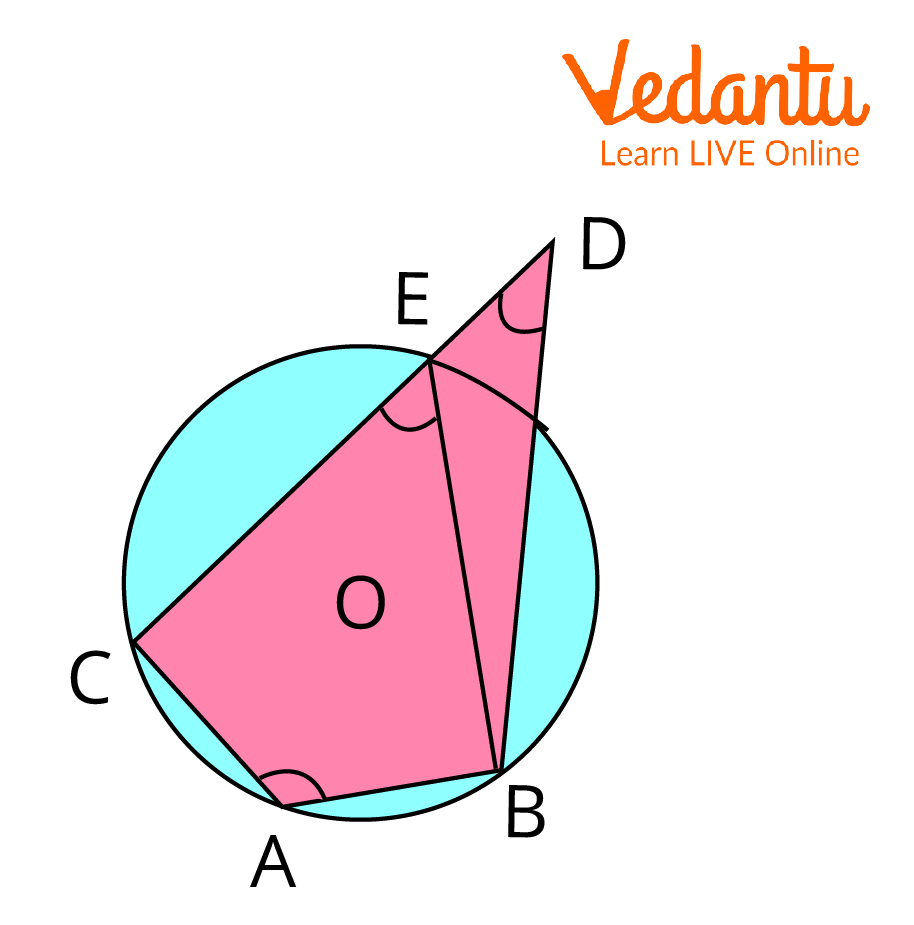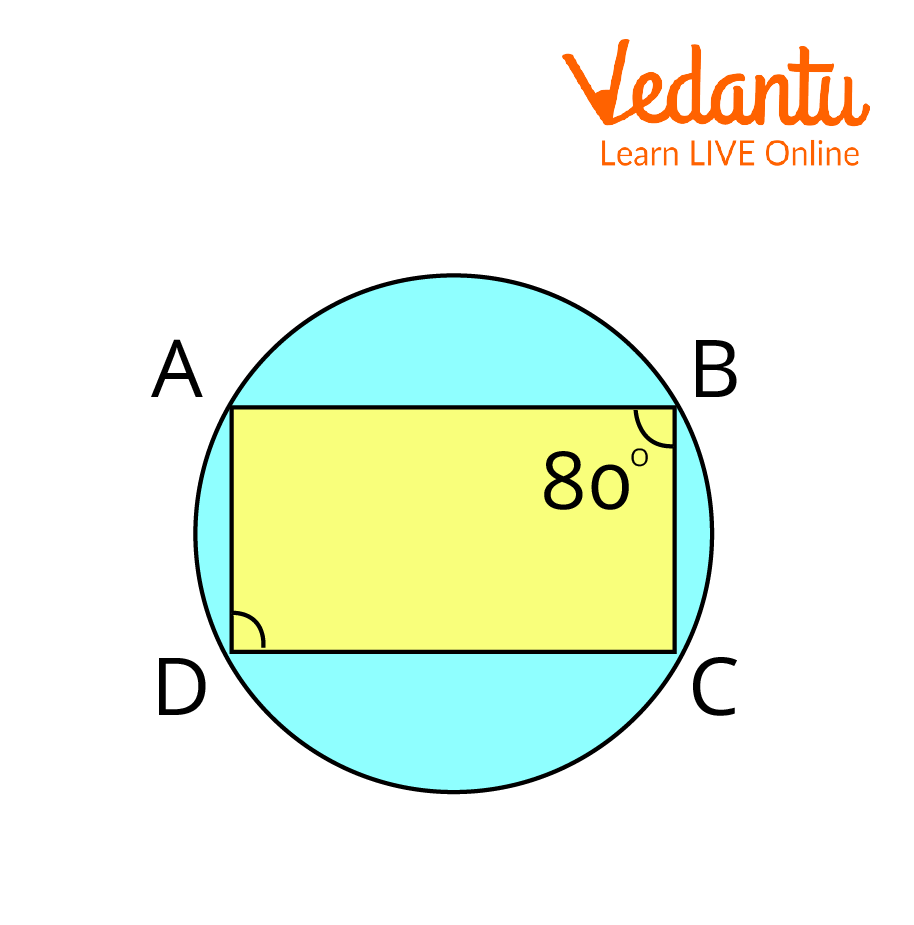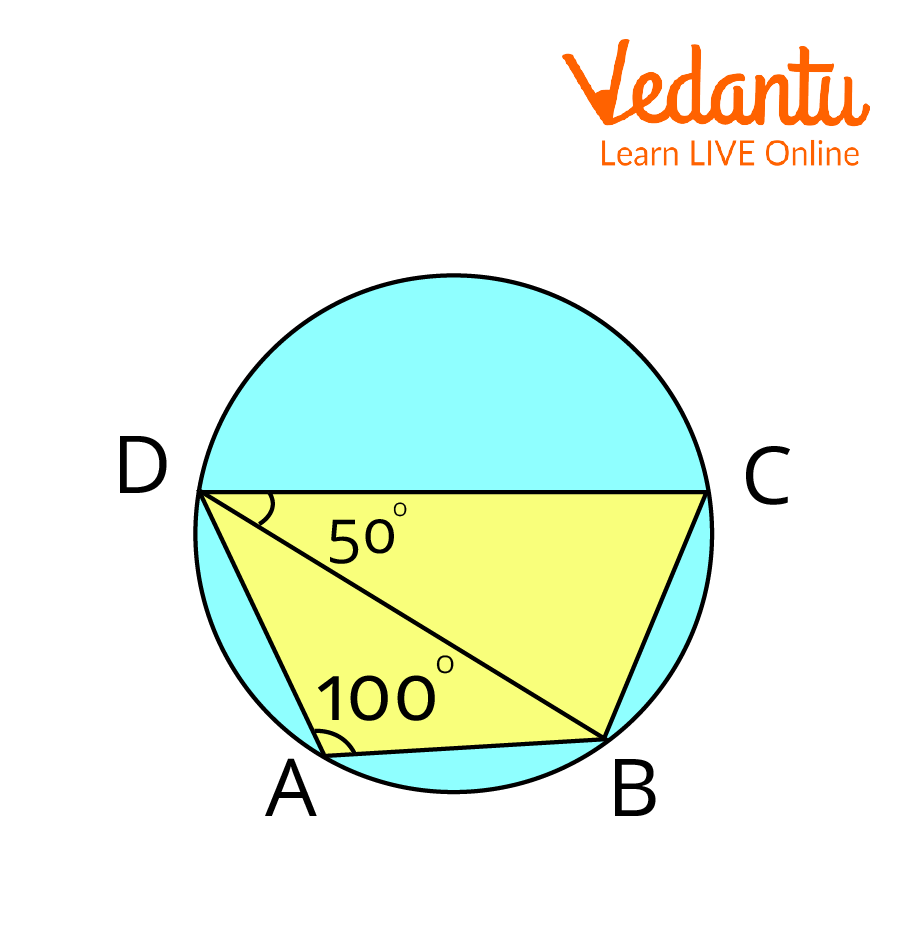




An Overview of the Theorem
In this article, we will prove the theorem and the converse of the theorem on the sum of opposite angles of a cyclic quadrilateral. The Cyclic Quadrilateral Theorem is a fundamental tool of Euclidean Geometry that connects the quadrilateral with the circles and tells us about the properties of cyclic quadrilaterals. In this article, some of the solved examples related to the application of the theorem and the converse of the theorem will also be discussed along with the applications of the theorem in the real world for a crystal clear understanding of the topic.
History of Euclid

Euclid
Name: Euclid
Born: 325 BC
Died: 265 BC
Field: Mathematics
Nationality: Egypt
Statement of the Theorem on the Sum of Opposite Angles of a Cyclic Quadrilateral
According to the Cyclic Quadrilateral Theorem, the sum of either pair of opposite angles in a cyclic quadrilateral is supplementary, i.e., 180 degrees.
Proof of Theorem on Sum of Opposite Angles of Cyclic Quadrilateral

Cyclic quadrilateral ABCD with centre O
Given: Consider a cyclic quadrilateral
To prove:
By angle sum property of a quadrilateral,
From equations (1), (2), (3), and (4),
Similarly,
Hence proved.
The Converse of Cyclic Quadrilateral

Converse of Cyclic Quadrilateral Theorem
Given: ABCD is a quadrilateral with:
To Prove:
Proof: Since A, B, C are non-collinear, the circle passes through three collinear points.
Let us draw a circle
Let us suppose
But given
Thus,
Now,
Thus, our assumption was wrong.
Hence proved.
Limitations of the Theorem on the Sum of Opposite Angles of a Cyclic Quadrilateral
The Cyclic Quadrilateral theorem only tells us about the opposite pair of angles and doesn't tell anything about the corresponding pairs of angles.
The cyclic quadrilateral is not applicable if any quadrilateral is formed with only three points on the circumference and a fourth point inside the circle.
Applications of the Theorem on the Sum of Opposite Angles of a Cyclic Quadrilateral
The cyclic Quadrilateral Theorem is used in computer programming.
It is used in graphic arts, logos, and packaging.
It is used in making paintings, sculptures, etc.
Solved Examples
1. Find the value of angle D of a cyclic quadrilateral, if angle B is

ABCD is a cyclic quadrilateral with angle B is 80 degrees.
Ans: Since
Hence, the sum of a pair of two opposite angles
The value of angle
2. Find the value of angle
Ans:
As ABCD is a cyclic quadrilateral, hence the sum of a pair of two opposite angles
The value of angle D is
3. In the figure given below,

To find angle DBC in a cyclic quadrilateral
Ans:
Given,
In
Therefore,
Important Points to Remember
The sum of pairs of opposite angles of a cyclic quadrilateral is always supplementary.
If the sum of a pair of opposite angles of a Quadrilateral is supplementary, then the quadrilateral is a cyclic quadrilateral.
Important Formulas to Remember
If
If in a quadrilateral
Conclusion
In the article, we have discussed the proof of the Cyclic Quadrilateral Theorem and its converse. Applications of Cyclic Quadrilaterals are also discussed in this article. Cyclic Quadrilaterals are connecting links between polygons and circles. In all, we can say that the Cyclic Quadrilaterals are very important component of Geometry and connects the fundamental tools of geometry, i.e., Polygons and circles.
FAQs on Theorem on the Sum of Opposite Angles of the Cyclic Quadrilateral
1. What is meant by Cyclic Quadrilaterals?
The quadrilaterals are the figures which have 4 sides and any quadrilateral is said to be cyclic quadrilateral if all the vertices of the quadrilateral lie on the circumference of the circle. Cyclic Quadrilaterals are the special type of quadrilaterals in Euclidean Geometry which connects the quadrilateral figures with the circle. If there is a quadrilateral whose one or more sides are inside the circle and not on the circumference of the circle, such type of quadrilateral cannot be called a cyclic quadrilateral.
2. What are the properties of Cyclic Quadrilaterals?
Some of the properties of Cyclic Quadrilaterals are as follows:
The vertices of the cyclic quadrilateral always lie on the circumference of the circle.
The area of the Cyclic Quadrilaterals is calculated using Heron's formula.
The Perpendicular bisectors in Cyclic Quadrilateral are always concurrent.
The Perpendicular bisectors of the sides of the Cyclic Quadrilateral meet at the centre of the circle.
If any side of the cyclic quadrilateral is extended, then the exterior angle formed is equal to the sum of interior opposite angles.
3. What are concyclic points and how are they related to cyclic quadrilaterals?
The points are said to be concyclic points if they lie on the same circle or we can say that if a circle passes through all the points, then the points are said to be concyclic. An interesting property regarding concyclic points is that any three noncollinear points are always concyclic as there will always exist a circle passing through such points. The polygon formed using concyclic points is called a cyclic polygon. If there are four concyclic points, then the polygon formed using four concyclic points is called a cyclic quadrilateral.






































